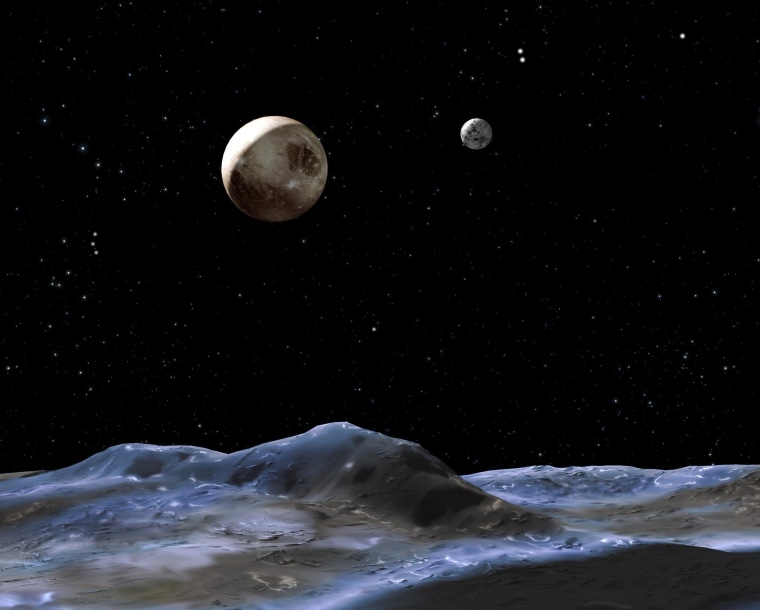When NASA's New Horizons probe streaks past Pluto, scientists will be looking for cracks in the surface of its biggest moon, Charon, to figure out whether it was ever warm enough to maintain a subsurface ocean.
It seems hard to believe, considering that the surface temperature on Pluto and its moons is thought to be 380 degrees below zero Fahrenheit (-229 degrees Celsius). But scientists say it's theoretically possible for Charon to have had a hidden sea of liquid water.
Sign up for Science news delivered to your inbox

The issue applies not only to Charon, but to other worlds thought to have ice-covered oceans to this day — including Jupiter's moon Europa and Saturn's moon Enceladus. Even though those moons have frozen surfaces, planetary scientists say their interiors should be warm enough to allow for liquid water due to tidal flexing.
Today, Charon and Pluto are tidally locked, which means any ocean Charon might have had should be frozen by now. But if Charon experienced large tides in the ancient past, the evidence of that should still be visible in the form of characteristic patterns of cracks in the moon's surface ice. The New Horizons team plans to document Charon's cracks when their spacecraft flies by in July 2015.
"Our model predicts different fracture patterns on the surface of Charon depending on the thickness of its surface ice, the structure of the moon's interior and how easily it deforms, and how its orbit evolved," Alyssa Rhoden of NASA's Goddard Space Flight Center said Friday in a NASA news release. "By comparing the actual New Horizons observations of Charon to the various predictions, we can see what fits best and discover if Charon could have had a subsurface ocean in its past, driven by high eccentricity."
Rhoden is lead author of a paper on this research, available online in the journal Icarus.
If scientists determine Charon once had an ocean, would that mean the moon could have sustained life? Liquid water is one of the requirements for life as we know it, but a sufficient energy source and the right mix of chemicals are required as well. Whether all those requirements were satisfied on ancient Charon is a complicated scientific issue, just as it is for present-day Europa and Enceladus.